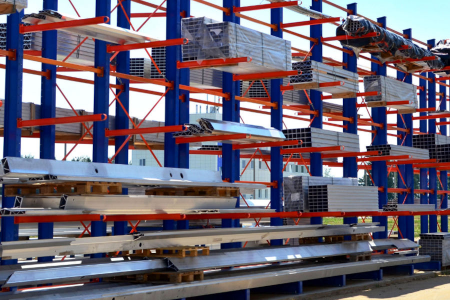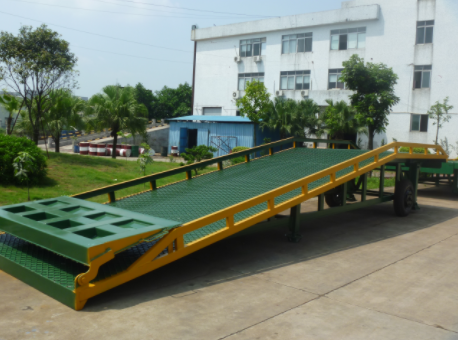 spieth12@spiethstorage.com
spieth12@spiethstorage.com +86 18006010205
+86 18006010205
LATEST NEWS
-
Time:9/16/2025
-
Time:9/15/2025
-
Time:9/10/2025
-
Time:9/5/2025
-
Time:9/2/2025
CONTACT US
-
 Tel : +86 18006010205
Tel : +86 18006010205
-
 E-mail : spieth12@spiethstorage.com
E-mail : spieth12@spiethstorage.com
-
 Address : Tongan Park, Tongan District, Xiamen, China 361023
Address : Tongan Park, Tongan District, Xiamen, China 361023
Product News
What Is Osha Requirements for Warehouse Racking
 Time:7/1/2025
Time:7/1/2025 418
418
Warehouse racking systems play a crucial role in ensuring efficient storage and material handling in industrial environments. However, improper installation, overloading, and poor maintenance of these systems can lead to serious accidents, injuries, or fatalities. That’s why regulatory agencies like OSHA (Occupational Safety and Health Administration) set forth clear safety expectations for warehouse racking operations—though they are often general and supplemented by recognized industry standards.
While OSHA does not have a specific, standalone regulation solely dedicated to warehouse racking systems, it mandates employers to provide a workplace free from recognized hazards under the General Duty Clause (Section 5(a)(1) of the OSHA Act). In this context, unsafe racking systems are considered a recognized hazard.
In addition, other relevant OSHA standards that may apply to racking systems include:
29 CFR 1910.176(b) – “Secure storage”: Material stored in tiers must be stacked, blocked, interlocked, and limited in height so that it is stable and secure against sliding or collapse.
29 CFR 1910.22 – “General walking-working surfaces”: Employers must ensure that all areas of the workplace, including storage areas, are kept in a clean, orderly, and sanitary condition.
29 CFR 1910.178 – For forklift operation near racking systems; forklift impacts are one of the most common causes of rack damage.
Although OSHA references general safety, detailed technical specifications and best practices for racking systems are often governed by the Rack Manufacturers Institute (RMI) and ANSI MH16.1 standards. OSHA may cite these standards as a benchmark during inspections or investigations.
Key points include:
Engineered Design: Racking systems must be designed and installed per manufacturer specifications and suited to the load types and weights.
Load Ratings: Each rack should display clear load capacity labels. Exceeding these ratings can lead to structural failure.
Anchoring: All rack uprights must be securely anchored to the floor to prevent tipping or displacement.
Leveling: Racks must be installed on level surfaces; unlevelled systems are more prone to collapse under load or forklift impact.
Seismic Considerations: In areas prone to earthquakes, racks should comply with local seismic design codes.
OSHA emphasizes routine inspections and maintenance of all workplace equipment, including warehouse racking. Best practices include:
Regular Inspections: Racking systems should be inspected at regular intervals (e.g., weekly or monthly) for signs of damage such as bent uprights, twisted beams, broken welds, or missing safety clips.
Immediate Repairs: Any damaged rack components must be repaired or replaced immediately. Temporary fixes such as taping or welding are not acceptable unless approved by the manufacturer.
Documentation: Maintain a record of all inspections, repairs, and modifications made to the racking system.
OSHA requires all employees to be trained on the safe use of equipment. For warehouse racking, this includes:
Proper Loading and Unloading: Staff should be trained to evenly distribute loads, avoid overloading, and respect the rated capacities of the racks.
Forklift Operation Awareness: Since forklifts are often involved in rack collisions, operators must be trained and certified per OSHA 1910.178(l).
Restricted Access: Only trained and authorized personnel should access storage racks, especially higher levels using ladders or lifts.
Clear signage is a critical component of warehouse safety. OSHA doesn’t specify exact signage requirements for racking, but following these guidelines is considered industry best practice:
Load Capacity Labels: All racks should display clearly visible labels stating the maximum allowable loads per shelf and per bay.
Hazard Warnings: Signs indicating "Do Not Climb", "Forklift Traffic", or “Report Damage” can prevent accidents.
Emergency Information: In case of collapse, having clearly marked emergency exits and response procedures is essential.
Failure to meet OSHA’s safety expectations regarding racking systems can result in:
Fines and Citations: OSHA can impose penalties for unsafe storage practices, especially after an incident.
Increased Insurance Costs: Unsafe conditions may lead to higher workers' compensation premiums.
Liability in Case of Injury: If an employee is injured due to poorly maintained or overloaded racking, the employer may face legal and financial liability.
While OSHA doesn’t outline detailed technical specifications for warehouse racking systems, it holds employers responsible for ensuring that such systems are safe, properly maintained, and used correctly. Compliance with OSHA's general requirements—supplemented by ANSI/RMI standards, proper training, regular inspections, and clear signage—can dramatically reduce the risk of accidents and improve warehouse safety.
By investing in compliant racking systems and promoting a safety-first culture, warehouse operators can meet OSHA expectations, protect workers, and avoid costly disruptions.

1. OSHA’s General Safety Requirements
While OSHA does not have a specific, standalone regulation solely dedicated to warehouse racking systems, it mandates employers to provide a workplace free from recognized hazards under the General Duty Clause (Section 5(a)(1) of the OSHA Act). In this context, unsafe racking systems are considered a recognized hazard.
In addition, other relevant OSHA standards that may apply to racking systems include:
29 CFR 1910.176(b) – “Secure storage”: Material stored in tiers must be stacked, blocked, interlocked, and limited in height so that it is stable and secure against sliding or collapse.
29 CFR 1910.22 – “General walking-working surfaces”: Employers must ensure that all areas of the workplace, including storage areas, are kept in a clean, orderly, and sanitary condition.
29 CFR 1910.178 – For forklift operation near racking systems; forklift impacts are one of the most common causes of rack damage.
2. Design and Installation Guidelines
Although OSHA references general safety, detailed technical specifications and best practices for racking systems are often governed by the Rack Manufacturers Institute (RMI) and ANSI MH16.1 standards. OSHA may cite these standards as a benchmark during inspections or investigations.
Key points include:
Engineered Design: Racking systems must be designed and installed per manufacturer specifications and suited to the load types and weights.
Load Ratings: Each rack should display clear load capacity labels. Exceeding these ratings can lead to structural failure.
Anchoring: All rack uprights must be securely anchored to the floor to prevent tipping or displacement.
Leveling: Racks must be installed on level surfaces; unlevelled systems are more prone to collapse under load or forklift impact.
Seismic Considerations: In areas prone to earthquakes, racks should comply with local seismic design codes.
3. Inspections and Maintenance
OSHA emphasizes routine inspections and maintenance of all workplace equipment, including warehouse racking. Best practices include:
Regular Inspections: Racking systems should be inspected at regular intervals (e.g., weekly or monthly) for signs of damage such as bent uprights, twisted beams, broken welds, or missing safety clips.
Immediate Repairs: Any damaged rack components must be repaired or replaced immediately. Temporary fixes such as taping or welding are not acceptable unless approved by the manufacturer.
Documentation: Maintain a record of all inspections, repairs, and modifications made to the racking system.
4. Training and Safe Use
OSHA requires all employees to be trained on the safe use of equipment. For warehouse racking, this includes:
Proper Loading and Unloading: Staff should be trained to evenly distribute loads, avoid overloading, and respect the rated capacities of the racks.
Forklift Operation Awareness: Since forklifts are often involved in rack collisions, operators must be trained and certified per OSHA 1910.178(l).
Restricted Access: Only trained and authorized personnel should access storage racks, especially higher levels using ladders or lifts.
5. Signage and Labeling
Clear signage is a critical component of warehouse safety. OSHA doesn’t specify exact signage requirements for racking, but following these guidelines is considered industry best practice:
Load Capacity Labels: All racks should display clearly visible labels stating the maximum allowable loads per shelf and per bay.
Hazard Warnings: Signs indicating "Do Not Climb", "Forklift Traffic", or “Report Damage” can prevent accidents.
Emergency Information: In case of collapse, having clearly marked emergency exits and response procedures is essential.
6. Compliance and Liability
Failure to meet OSHA’s safety expectations regarding racking systems can result in:
Fines and Citations: OSHA can impose penalties for unsafe storage practices, especially after an incident.
Increased Insurance Costs: Unsafe conditions may lead to higher workers' compensation premiums.
Liability in Case of Injury: If an employee is injured due to poorly maintained or overloaded racking, the employer may face legal and financial liability.
Conclusion
While OSHA doesn’t outline detailed technical specifications for warehouse racking systems, it holds employers responsible for ensuring that such systems are safe, properly maintained, and used correctly. Compliance with OSHA's general requirements—supplemented by ANSI/RMI standards, proper training, regular inspections, and clear signage—can dramatically reduce the risk of accidents and improve warehouse safety.
By investing in compliant racking systems and promoting a safety-first culture, warehouse operators can meet OSHA expectations, protect workers, and avoid costly disruptions.
Send Message
ONLINE SERVICE
-

-
 +86 18006010205
+86 18006010205 -
 +86 18006010205
+86 18006010205
 0
0
Browsing History


















 link:
link:




